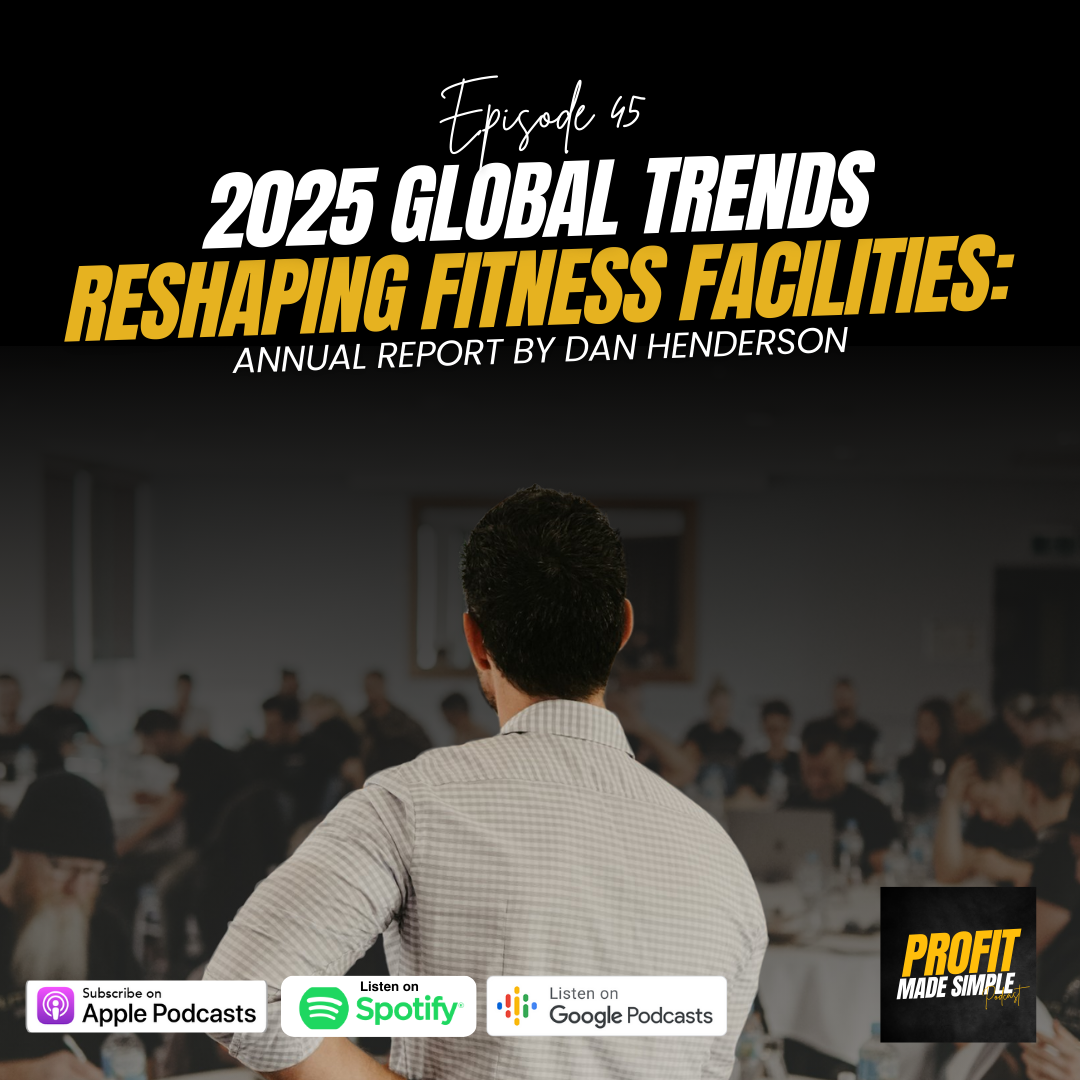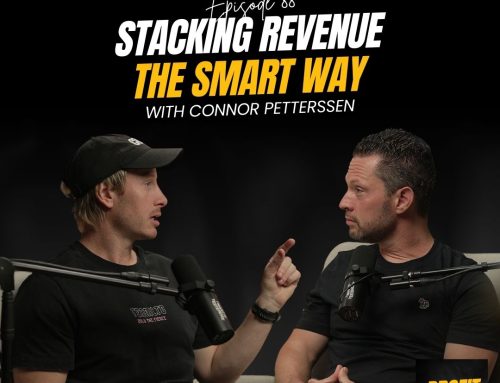As we kick off 2025, fitness business owners face a rapidly evolving industry. In the latest Profit Made Simple podcast episode, host Dan Henderson shared 12 predictions that every fitness entrepreneur should know to stay ahead. These insights are divided into macro trends, shaping the broader world, and micro trends, specific to the fitness industry.
Here’s your guide to understanding these predictions and using them to position your business for success.
6 Macro Trends for 2025
1. Embrace AI or Be Left Behind
Artificial Intelligence (AI) is no longer the future—it’s the present. Businesses that integrate AI for content creation, client programming, and data analysis will thrive. Think of AI as your 24/7 assistant, capable of delivering deep insights into your business metrics in minutes.
However, avoid using AI generically. Personalise its output to reflect your unique tone and brand, ensuring your content resonates authentically with your audience.
2. The Rise of the Experience Economy
In 2025, you’re not just in the fitness industry—you’re in the experience industry. Consumers crave community-driven, shareable moments, as seen with the popularity of events like Hyrox and local run clubs.
Action Step: Curate unforgettable experiences that go beyond workouts, emphasising community and emotional connection.
3. The Wellness-Fitness Integration
The lines between fitness and wellness are blurring. Searches for wellness outnumber fitness 5:1, and consumers are prioritising mental and emotional well-being above everything else.
Tip: Consider partnerships with wellness providers or hosting guest-led sessions to integrate wellness into your services.
4. A Discernible Economy
While economic conditions may improve slightly, consumers will be selective with their spending. Offering high-quality services and exceptional value will be crucial.
Example: Enhance your offerings without raising prices to stand out as a top-tier provider.
5. The Longevity Movement
Preventative health is becoming a core focus, driven by thought leaders like Andrew Huberman and Peter Attia. Fitness businesses should shift their messaging toward promoting long-term health and resilience.
Pro Tip: Tailor your programs to emphasise strength, bone density, and overall longevity, especially for middle-aged clients.
6. The Rise of GLP1 Drugs
Drugs like Ozempic and Wegovy are changing the weight-loss landscape. Interestingly, these drugs have increased exercise adoption among users, creating an opportunity for fitness providers.
Takeaway: Adapt your marketing to attract this growing demographic and emphasise exercise as a complement to their regimen.
6 Micro Trends for 2025
1. Your Personal Brand Is Everything
Consumers are drawn to authentic, relatable business owners. Building your personal brand will help you stand out in a crowded market.
Strategy: Share your personality, struggles, and wins. Use storytelling to connect with your audience on a deeper level.
2. Paid Ads Are Evolving
Meta platforms (Instagram and Facebook) are becoming more complex with their AI-driven systems. The cost per lead is rising, making strategic ad campaigns essential.
Advice: Focus on video marketing and building a strong database. Prioritise brand awareness before making direct offers.
3. Hybrid Models Are a Must
The hybrid approach—combining in-person and online services—is no longer optional. Many clients want resources to exercise outside of your facility.
Suggestions: Use apps like Trainerize or create an online portal with videos and guides. Charge appropriately for this enhanced service.
4. Elevate Online Training
Online training must go beyond basic programs and meal plans. Clients expect more touchpoints, accountability, and value.
Enhancement Ideas:
Host live Zoom workshops.
Offer non-sweat coaching calls.
Integrate face-to-face touchpoints where possible.
5. Optimise Your Physical Space
With strength training at the forefront of consumer goals, your facility should reflect this demand.
Updates to Consider:
Create dedicated strength zones.
Incorporate self-care areas for foam rolling, stretching, and recovery.
Use open, well-lit designs to enhance the client experience.
6. Shift to Lifestyle Coaching
Clients expect comprehensive support, including guidance on stress, sleep, and recovery. Fitness is now part of a broader lifestyle approach.
Action Step: Integrate wearables like Oura Rings or Whoop bands to track and optimise clients’ overall well-being.
Final Thoughts
These 12 predictions highlight the dynamic changes shaping the fitness industry in 2025. By embracing trends like AI, hybrid models, and the experience economy, you can position your business as a leader in this competitive space.
Take action today to implement these insights and prepare for a successful year ahead.







Leave A Comment